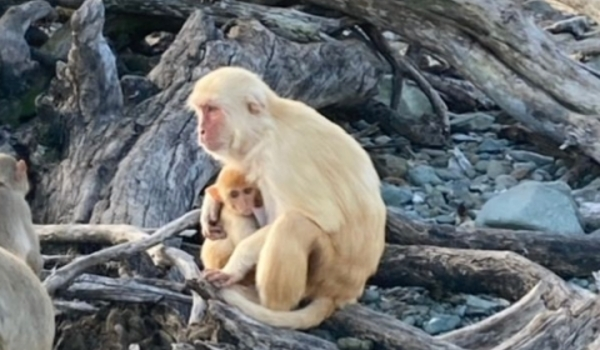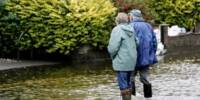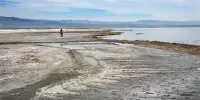When Hurricane Maria slammed into Puerto Rico in September 2017 as a high-end category 4 storm, it left behind the island’s worst disaster in its history. In its immediate aftermath, the storm killed over 3,000 people, knocked out power to nearly all of the island’s 3.4 million residents, and caused more than $100 billion in damage. What was the long-term impact of this stress and adversity on its population’s health? And could being exposed to extreme weather events hasten the aging process?
“While everyone ages, we do not all age at the same rate, and our lived experiences, both positive and negative, can influence our aging rate. Surviving an extreme event can cause chronic inflammation and the early onset of some age-related diseases, such as heart disease “corresponding author Noah Snyder-Mackler, an assistant professor in the School of Life Sciences at Arizona State University, said “However, we still don’t know how these events become embedded in our bodies, causing negative health effects that may not manifest themselves for decades after the event itself.”
While the final toll on the survivors’ mental and physical health has yet to be determined, a group of biologists led by Snyder-Mackler has turned to one of our closest evolutionary cousins for the first clues.
Along with the human toll, the devastation impacted all of the island’s wildlife, including a group of free-roaming rhesus macaques living on the isolated Cayo Santiago island near Puerto Rico. The animals have been on the island since 1938, when the Caribbean Primate Research Center field station first opened.
Now, the ASU team, led by Snyder-Mackler and lead author Marina Watowich-a graduate student at the University of Washington and research scientist at ASU, and their collaborators at the Caribbean Primate Research Center, University of Pennsylvania, University of Exeter and New York University, have published (will include DOI) one of the first results that shows the effects of natural disasters may have molecularly accelerated aging in the monkeys’ immune systems.
Our findings suggest that differences in immune cell gene expression in individuals exposed to a severe natural disaster were similar in many ways to the effects of natural aging. We also found evidence of accelerated biological aging in samples taken from animals after Hurricane Maria.
Snyder-Mackler
Accelerated aging
As a category 4 hurricane, Maria wreaked havoc on Cayo Santiago’s natural habitat and research infrastructure. Surprisingly, only 2.75% of the macaque population died in the aftermath of the storm. And there was no difference in survival one year after the hurricane. Was the health of hurricane survivors harmed in any other way?
People of the same chronological age (the number of years since birth) can develop disease at different ages. It is well known that people who have had extremely negative experiences are more likely to develop heart disease and other diseases that are more common in older people. It is still unknown how these negative experiences ‘get under the skin’ to promote disease. One theory is that this phenomenon is caused by extreme adversity ‘aging’ the body. People’s biological ages can differ, as measured by molecular markers embedded in our genes, immune systems, and physiology.
“From this study, we have measured the molecular changes associated with aging, including disruptions of protein-folding genes, greater inflammatory immune cell marker gene expression and older biological aging,” said Watowich.
The researchers discovered that the adversity caused by the hurricane may have accelerated immune system aging after carefully examining the genes expressed in the macaques’ immune cells.
“On average, monkeys who survived the hurricane had immune gene expression profiles that had aged 2 extra years, or approximately 7-8 years of human lifespan,” Watowich said.
The findings suggest that severe weather events, which are becoming more frequent and severe as a result of climate change, may have biologically negative consequences for those who experience them. This is especially important given that hurricanes and other extreme weather events are becoming stronger and more common as a result of climate change.

Biological aging
Cayo Santiago, a 15.2-hectare island one kilometer off the southeastern coast of Puerto Rico, is home to a population of 1,800 free-roaming rhesus macaques that have been studied for nearly a century.
“Cayo Santiago was the first part of Puerto Rico to be hit by Hurricane Maria, and it took the full brunt of the category 4 storm,” Snyder-Mackler explained. “The hurricane destroyed homes and infrastructure throughout Puerto Rico, and on Cayo Santiago, it decimated the majority of the vegetation, as well as the water cisterns and research infrastructure required to keep the field station running.”
The rhesus macaques share many behavioral and biological characteristics with humans, including how their bodies age, but their lifespan is one-quarter that of ours. The scientific team knew that by studying macaques, they could get estimates of aging in years rather than decades as in comparable human studies.
Marina Watowich and the rest of the team were able to leverage a collection of blood samples and a history of detailed demographic data from age-matched subsets of the Cayo Santiago rhesus macaque population to test how Hurricane Maria influenced immune cell gene regulation and aging.
By performing a global analysis of immune gene expression, they found 4% of genes expressed in immune cells were altered after the hurricane. Of these, genes that had higher expression after the hurricane were involved in inflammation, and genes dampened by the hurricane were those involved in protein translation, protein folding/refolding, the adaptive immune response and T cells.
The downregulation of so-called heat shock genes, which promote the proper function of protein synthesis in our cells, was the most impacted, with some having two-fold lower activity after Hurricane Maria. These genes have also been linked to heart disease and Alzheimer’s disease.
Surprisingly, they discovered a strong correlation between hurricane exposure and aging effects on gene expression, with the effect of the hurricane being similar to the effect of the immune system aging. They looked at profiles from single-cell RNA sequencing to identify genes that are preferentially expressed in key immune cell types to understand how the hurricane may have affected amounts of immune cell populations.
“Overall, cell-specific markers of canonical pro-inflammatory immune cells, such as CD14+ monocytes, had higher expression in older individuals and those that experienced the hurricane. Further, expression of helper T-cell genes, an anti-inflammatory cell type, decreased in older animals and those after the hurricane. Together, this possibly implicates more inflammatory activity in animals after storm, similar to what we see in older individuals,” said Snyder-Mackler.
Getting under the skin
From their long-term studies, as part of a collaboration with the Caribbean Primate Research Center, University of Pennsylvania, University of Exeter and New York University, they had four years of data prior to Hurricane Maria (n = 435) and one year after (n = 108) Hurricane Maria. They hypothesized that exposure to the hurricane would recapitulate molecular changes associated with the natural process of aging.
“Our findings suggest that differences in immune cell gene expression in individuals exposed to a severe natural disaster were similar in many ways to the effects of natural aging,” Snyder-Mackler said. “We also found evidence of accelerated biological aging in samples taken from animals after Hurricane Maria.”
“Most importantly, we identify a critical mechanism-immune cell gene regulation-that may explain how adversity, particularly in the context of natural disasters, may eventually ‘get under the skin’ to drive age-related disease onset and progression,” Watowich said.
Interestingly, not all monkeys responded similarly to the hurricane. For example, some monkeys’ biological ages increased much more than others. The team hypothesizes that there may be other aspects of the monkey’s environment that can influence their response to adversity.
For example, just like in people, social support is a critical aspect of the ability to help cope and deal with adversity. It is possible that monkeys with greater social support after the storm were better able to overcome any detrimental effects-an aspect the team hopes to investigate soon. The study did have its limitations, foremost, that they could not measure aging rates within the same individuals before or after the hurricane.
They hope that future research will include longer-term studies of every individual within a population to learn more about the intersection of biological aging, adversity, and social structures in the face of a natural disaster.
Finally, they hope that their findings will spur efforts to develop a better understanding of aging and adversity, and perhaps one day, a successful mitigation strategy to reduce the toll of natural disasters.
















